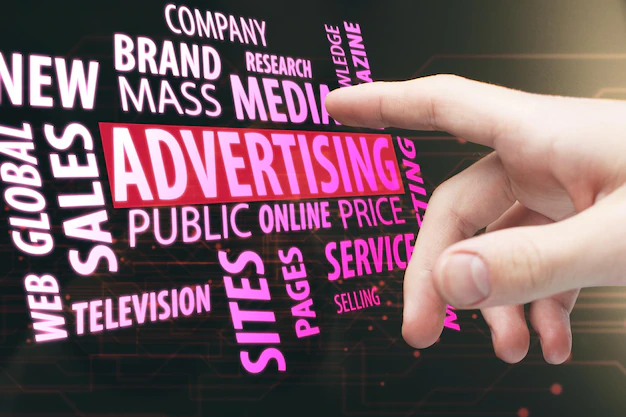From Clicks To Conversions: Maximizing Success With Direct Response Marketing

The main goal of direct response marketing is to encourage potential clients to undertake specific actions that align with your objectives. These actions could involve placing a phone call, participating in an online consultation, or filling out a form on a website — essentially, taking tangible and decisive steps.
To incentivize this desired engagement, you can offer a complimentary bonus in exchange for their contact information. Alternatively, you can provide free responses to their inquiries upon signing up or submitting a form. The key emphasis lies in motivating the potential customer to take a definitive ACTION!
However, it’s crucial that our so-called “bonus” serves as a compelling catalyst, inspiring the prospective customer to not only respond initially but also to take subsequent actions. The bonus should act as a source of inspiration, fueling their motivation to further engage with our offerings.
Principles of direct response marketing
Direct response marketing has become increasingly prevalent in today’s digital advertising landscape. To achieve desirable outcomes, it is essential to understand the core principles that underpin an effective direct-response marketing strategy. In this section, we will examine these principles in detail and explore how they can drive successful results.
Subtle Call to Action (CTA) Integration
Beyond the overt CTAs, there’s a nuanced approach to seamlessly integrate calls to action within the content, ensuring that the audience is subtly guided toward desired actions without feeling pressured.
Holistic Measurement Metrics
While the emphasis is on traditional metrics like conversion rates, successful direct response marketing also delves into holistic measurements. This includes evaluating the qualitative impact of customer engagement and the overall brand experience.
Psychographic Audience Segmentation
In addition to demographic factors, direct response marketers consider psychographic elements, understanding the audience’s values, lifestyles, and aspirations. This deeper segmentation allows for more nuanced and resonant messaging.
Value-Driven Offers
Beyond immediate incentives, less obvious direct response strategies involve emphasizing long-term value. This could include loyalty programs, exclusive memberships, or extended trial periods that foster sustained customer engagement.
Strategic Offline Engagement
While digital channels are prominent, effective direct response marketing recognizes the enduring impact of offline strategies. This might involve direct mail campaigns, targeted events, or partnerships that extend the brand’s reach beyond the digital landscape.
Narrative Trust-Building
Trust is cultivated not just through testimonials but through narrative storytelling. Less evident direct response tactics involve weaving a cohesive brand narrative that instills trust over time, contributing to sustained customer loyalty.
Cognitive Emotional Appeals
In addition to emotional connections, there’s a nuanced understanding of cognitive appeals. This involves leveraging cognitive psychology principles to influence decision-making, ensuring a more comprehensive and impactful engagement.
Predictive Data Analytics
Beyond analyzing historical data, sophisticated direct response strategies employ predictive analytics. This forward-looking approach anticipates customer behavior, enabling proactive adjustments to campaigns for enhanced effectiveness.
Surprise and Delight Tactics
Less apparent tactics involve surprising customers with unexpected bonuses, personalized gestures, or exclusive content, fostering a positive brand perception and encouraging continued interaction.
Community Building
Direct response marketing extends beyond individual interactions to community building. Building a community around the brand involves creating forums, online groups, or events that foster a sense of belonging among customers.
Direct response marketing vs traditional advertising

Direct response and traditional advertising occupy opposite poles in the digital marketing spectrum, showcasing numerous distinctions. We will now delineate their divergences to illuminate the stark contrast between these two concepts.
Direct Response Marketing
- Provoking Immediate Interaction
Aims to spark an instant and quantifiable response from the audience, urging them to undertake tangible actions such as making purchases, completing forms, or initiating direct contact.
- Measuring Every Ripple
Operates in a realm where every marketing endeavor is meticulously measured and analyzed. Metrics like conversion rates, response rates, and customer acquisition costs serve as the compass for course correction.
- Crafting Personal Narratives
Intricately segments the audience, delving beyond demographics to comprehend psychographic nuances. The messaging is tailored with surgical precision to resonate with individual sensibilities.
- The Urgency of Now
Operates within the realm of immediacy, with a focus on short-term objectives. Urgency is the heartbeat, driving swift responses and immediate results.
- The Art of Persuasion
While creative expression is valued, the spotlight is on delivering a message that acts as an immediate catalyst for action. Each creative element serves a purpose in propelling the audience toward the desired response.
- A Symphony of Channels
Engages in a symphony across various channels, both online and offline. Email, social media, direct mail — each note plays a crucial role in orchestrating a harmonious response from the audience.
- Beyond Transactions
Extends beyond the transactional to cultivate relationships. Follow-up strategies and a commitment to delivering ongoing value contribute to a dynamic and enduring rapport with customers.
Related: Marketing Campaigns: How To Do It? – Steps To Follow
Traditional Advertising
- Cultivating Brand Tapestry
Reveres the slow and deliberate creation of a brand tapestry, weaving narratives that transcend immediate actions. The focus lies in sculpting a lasting presence and shaping enduring perceptions.
- The Enigma of Metrics
Treads a landscape where measurement is an enigma. Success is often gauged through the nebulous lens of brand recall and the abstract currents of market perception.
- Casting a Broad Canvas
Targets the masses with a broader brushstroke, delivering messages that are more generalized. The intent is to saturate the market, creating a pervasive brand presence.
- The Patience of Time
Adopts a patient stance, focusing on the marathon rather than the sprint. Building brand equity and fostering loyalty are gradual endeavors that transcend the immediate.
- Stories that Echo
Holds a reverence for the art of storytelling. Creative elements intertwine to evoke emotions, crafting stories that resonate and linger in the audience’s collective memory.
- Broadcasts on Traditions
Historically leans on traditional broadcast channels such as television, radio, and print, channeling the power of mass media for widespread visibility.
- Brand Loyalty as a Symphony
Seeks brand loyalty, viewing it as a symphony that evolves over time. Immediate responses are secondary to the gradual crescendo of a brand’s enduring presence.
Direct response marketing revolves around prompting an immediate and measurable response, often utilizing targeted and personalized strategies. In contrast, traditional advertising concentrates on cultivating long-term brand awareness and positive perceptions through broader, less immediate approaches. The selection between the two hinges on the particular marketing goals and objectives of a business.
Practical tips for implementing effective direct response marketing techniques

Clear and Compelling Call to Action (CTA)
When it comes to designing a successful campaign, your call to action (CTA) is a critical component. To ensure maximum impact, it’s important to keep your CTA simple and persuasive while making it easy for your audience to find. By clearly indicating the desired action you want your audience to take, such as making a purchase, filling out a form, or signing up for a trial, you’ll be able to guide them toward the next step in their customer journey. Additionally, by creating a visually attractive CTA aligned with your campaign objectives, you can increase the chances of a successful outcome.
Create Urgency with Limited-Time Offers
Instill a sense of urgency by incorporating limited-time offers or exclusive deals. Use phrases like “act now” or “for a limited time only” to motivate immediate responses from your audience.
Optimize Landing Pages for Conversion
Ensure your landing pages are optimized for conversion. The design should be clean, and the content should be concise and relevant. Streamline the user experience and make it easy for visitors to complete the desired action without unnecessary distractions.
Test and Iterate with A/B Testing
Conduct A/B testing on different elements of your campaign, such as headlines, visuals, and CTAs. Analyze the results to identify what resonates best with your audience. Continuously iterate and optimize based on the performance data.
Key Takeaways
In the world of direct response marketing, success is rooted in precision, urgency, and adaptability. A clear and compelling call to action sets the stage, directing audience engagement with clarity. Integrate urgency through limited-time offers, converting interest into swift action. Streamlined landing pages optimize the user experience for effective conversion. Harness the synergy of multi-channel integration to broaden campaign reach and reinforce messages.
Commit to continuous improvement through testing and iterative adjustments based on analytical insights. Personalize campaigns to resonate with individual preferences, fostering a more impactful connection. Craft persuasive and concise copy that speaks directly to audience needs. Utilize key metrics for robust measurement, guiding the campaign’s effectiveness and identifying areas for refinement.
Read Also:













